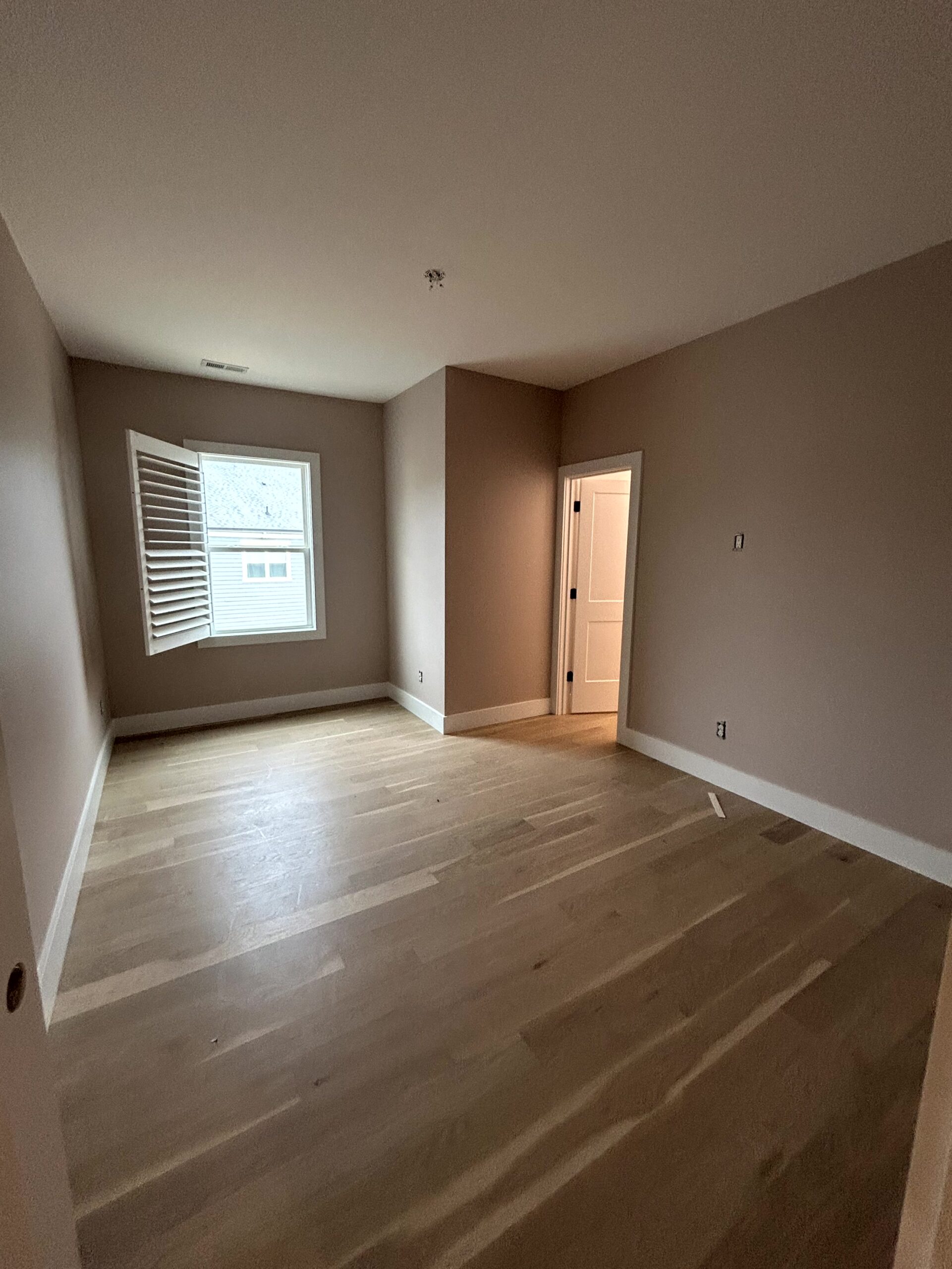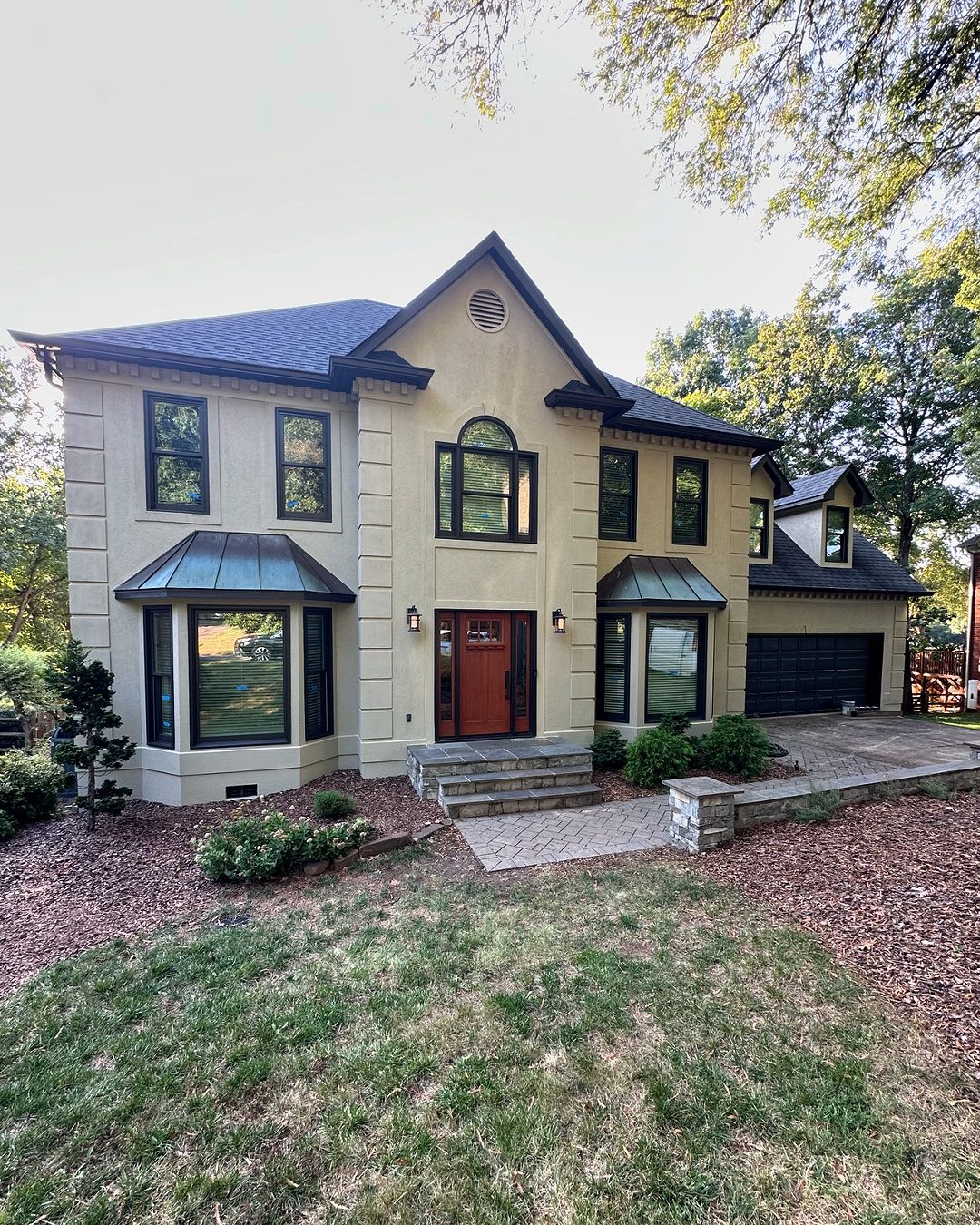Paint cracks indoors are rarely caused by the paint itself. Instead, paint cracks usually result from environmental factors such as fluctuating humidity, extreme temperature changes, poor ventilation, and even sunlight exposure. Understanding these triggers is critical for preventing costly repairs and ensuring long-lasting paint adhesion.
Paint adhesion depends on the bond between the paint film and the substrate. When environmental stress interferes — for instance, when moisture causes walls to swell or temperature swings make paint brittle — the bond weakens, leading to paint cracks, peeling, or flaking.
This blog explains the main environmental causes of paint cracks, the science behind why they occur, and the product- and service-specific solutions professional painters use to maintain strong paint adhesion indoors.
The Science of Paint and Environmental Stress

Paint is more than color; it is a structured coating made of:
-
Binders — polymers forming the continuous film.
-
Pigments — providing color and opacity.
-
Solvents — evaporating during drying.
-
Additives — enhancing flexibility, flow, or mildew resistance.
Paint adhesion occurs when the binder bonds chemically and mechanically to the substrate. Environmental stress affects both cohesion (internal strength of the paint film) and adhesion. Substrates expand or contract under humidity or temperature changes, stressing the paint film. When these forces exceed the paint’s flexibility, paint cracks develop, often starting small but spreading over time.
Key Environmental Factors That Cause Paint Cracks
Humidity and Moisture Fluctuations
High indoor humidity causes substrates like drywall, plaster, and wood to absorb water. This swelling stresses the paint film from beneath, reducing paint adhesion and increasing the likelihood of paint cracks. Conversely, extremely low humidity dries paint too fast, causing shrinkage and cracking. Seasonal swings magnify this effect, especially in climates with wet summers and dry winters.
Temperature Variations
Paint is sensitive to temperature. Heat softens the film, lowering tensile strength, while cold makes paint brittle. Rapid swings between hot and cold can cause a mismatch between the expansion of the substrate and the paint film, resulting in micro-cracks that eventually become visible paint cracks.
Poor Ventilation and Indoor Air Quality
In poorly ventilated rooms, moisture can accumulate behind the paint layer. Condensation forms, weakening paint adhesion and causing paint cracks over time. Airborne contaminants, including dust and grease, exacerbate the problem.
UV and Sunlight Exposure Indoors
UV light can penetrate windows, degrading paint binders and making coatings brittle. Surfaces near windows are more likely to develop paint cracks, chalking, or fading.
Environmental Factor Impact on Paint Cracks
| Environmental Factor | Mechanism of Paint Damage | Result on Paint Adhesion | Typical Crack Pattern |
|---|---|---|---|
| High Humidity | Substrate swelling, delayed drying | Weak bond | Wide, irregular cracks |
| Low Humidity | Rapid drying, shrinkage | Reduced cohesion | Fine, spiderweb cracks |
| Temperature Swings | Expansion/contraction mismatch | Stress on adhesion | Linear or flaking cracks |
| Poor Ventilation | Trapped moisture | Local adhesion failure | Localized peeling + cracks |
| UV Exposure Indoors | Binder degradation | Film becomes brittle | Surface powdering + cracks |
Product-Specific Solutions for Preventing Paint Cracks
Professional painters select products that strengthen paint adhesion and resist environmental stress:
-
High-Humidity Areas — Mildew-resistant, moisture-blocking primers such as Zinsser® Perma-White or Benjamin Moore® Aura® Bath & Spa reduce the risk of paint cracks.
-
Temperature-Variable Spaces — Flexible elastomeric coatings, like Sherwin-Williams® Duration Home, accommodate substrate movement without cracking.
-
UV-Prone Interiors — UV-resistant paints such as Behr® Marquee Interior with UV Protection protect binders from brittleness, maintaining paint adhesion.
-
Poor Ventilation Zones — Vapor-permeable primers like Loxon® Breathable Masonry Primer allow moisture to escape without compromising the bond.
Service-Specific Methods to Mitigate Environmental Causes

Professional Moisture and Environmental Assessment
Contractors use specialized tools to detect hidden risks:
-
Moisture meters to check drywall, plaster, and wood.
-
Hygrometers to monitor indoor relative humidity.
-
Thermal imaging to locate condensation points.
Early detection ensures that paint adhesion is not compromised and prevents paint cracks from forming.
Controlled Painting Environment Services
Painting in a controlled environment reduces environmental stress:
-
Dehumidifiers stabilize humidity levels.
-
Fans improve air circulation.
-
Temperature-controlled settings prevent rapid expansion/contraction.
Surface Preparation Tailored to Environmental Challenges
Surface prep is critical for strong paint adhesion:
-
Seal porous substrates with moisture-blocking primers.
-
Sand brittle paint to prevent crack telegraphing.
-
Repair substrate imperfections before painting to minimize future paint cracks.
Recommended Paint & Primer Pairings for Preventing Cracks
| Condition | Primer | Paint |
|---|---|---|
| High Humidity | Zinsser® Perma-White | Benjamin Moore® Aura® Bath & Spa |
| Temperature Swings | Sherwin-Williams® Extreme Bond Primer | Sherwin-Williams® Duration Home |
| UV Exposure | Behr® Interior Multi-Surface Primer | Behr® Marquee Interior with UV Protection |
| Poor Ventilation | Loxon® Breathable Masonry Primer | PPG® Break-Through! Interior/Exterior |
Maintenance and Environmental Control

Even the best products fail if environmental factors persist:
-
Maintain indoor humidity between 40–50%.
-
Avoid rapid temperature swings near painted surfaces.
-
Inspect annually for early paint cracks.
-
Clean gently to avoid surface damage that weakens paint adhesion.
People Also Ask (PAA)
-
Can humidity inside cause paint to crack? Yes, it affects substrate expansion and paint cohesion.
-
How does temperature affect indoor paint cracking? Rapid swings stress paint adhesion.
-
What paint is best for humid indoor environments? Moisture-resistant, mildew-proof latex.
-
Can controlling indoor environment prevent paint cracks? Yes, it preserves paint adhesion and film integrity.
-
How often should you repaint in high-humidity homes? Every 5–7 years, with maintenance inspections in between.
Conclusion
Paint cracks indoors are not always a sign of poor paint quality — they often signal environmental stress. Strong paint adhesion is the key to preventing these failures.
Combining expert surface preparation, environment-appropriate products, and controlled indoor conditions ensures that paint remains smooth, flexible, and crack-free. Professional painters can assess the environment, select compatible primers and coatings, and apply best practices that maximize durability.
Investing in professional services and appropriate products protects your interior paint and avoids costly repairs caused by preventable paint cracks. Schedule an environmental assessment today to safeguard your walls and ceilings.




